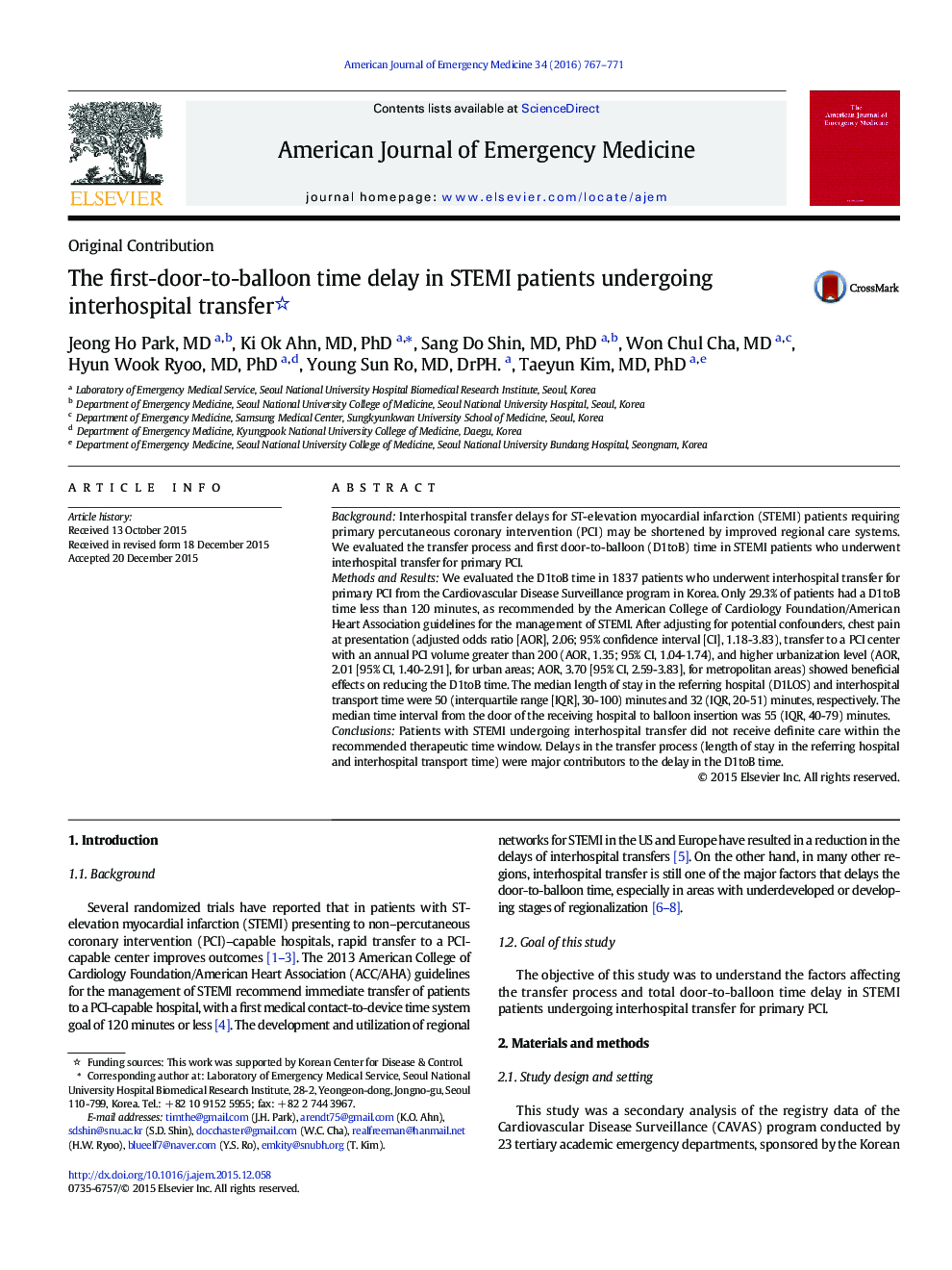| Article ID | Journal | Published Year | Pages | File Type |
|---|---|---|---|---|
| 3223284 | The American Journal of Emergency Medicine | 2016 | 5 Pages |
BackgroundInterhospital transfer delays for ST-elevation myocardial infarction (STEMI) patients requiring primary percutaneous coronary intervention (PCI) may be shortened by improved regional care systems. We evaluated the transfer process and first door-to-balloon (D1toB) time in STEMI patients who underwent interhospital transfer for primary PCI.Methods and ResultsWe evaluated the D1toB time in 1837 patients who underwent interhospital transfer for primary PCI from the Cardiovascular Disease Surveillance program in Korea. Only 29.3% of patients had a D1toB time less than 120 minutes, as recommended by the American College of Cardiology Foundation/American Heart Association guidelines for the management of STEMI. After adjusting for potential confounders, chest pain at presentation (adjusted odds ratio [AOR], 2.06; 95% confidence interval [CI], 1.18-3.83), transfer to a PCI center with an annual PCI volume greater than 200 (AOR, 1.35; 95% CI, 1.04-1.74), and higher urbanization level (AOR, 2.01 [95% CI, 1.40-2.91], for urban areas; AOR, 3.70 [95% CI, 2.59-3.83], for metropolitan areas) showed beneficial effects on reducing the D1toB time. The median length of stay in the referring hospital (D1LOS) and interhospital transport time were 50 (interquartile range [IQR], 30-100) minutes and 32 (IQR, 20-51) minutes, respectively. The median time interval from the door of the receiving hospital to balloon insertion was 55 (IQR, 40-79) minutes.ConclusionsPatients with STEMI undergoing interhospital transfer did not receive definite care within the recommended therapeutic time window. Delays in the transfer process (length of stay in the referring hospital and interhospital transport time) were major contributors to the delay in the D1toB time.
